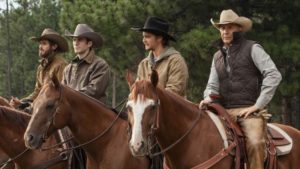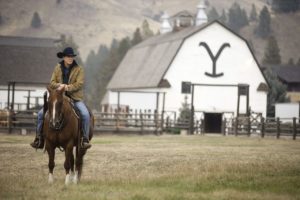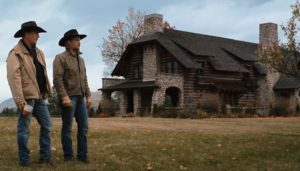The Media Allure of “Yellowstone”
Published on Dec. 8, 2022, at 9:43 a.m.
by Grace Brindley.
In 2018, the pilot for “Yellowstone,” an American television drama starring actor Kevin Costner, premiered on Paramount Network. The program has gone on to become the most popular television show in the United States, amassing over 12.1 million viewers for its 2022 season five opener.
“Yellowstone” takes place in Montana, surrounding a family that owns the largest ranch in the United States. The show depicts land disputes over the Yellowstone Ranch, which borders a Native American reservation and is desired by land developers.

“Yellowstone” is distinctly Western, and Kevin Costner attributes the show’s allure to this quality. Costner describes the series’ natural setting, filmed on a real ranch in Montana, as distinguishing “Yellowstone” from other programs on television. According to the actor, people today are attracted to the scenic backdrop because they are tethered to electronics and do not go outside enough.
Critics are calling “Yellowstone” the start of a new generation of Western TV. After a decades-long lull, “Yellowstone” has revived the popularity of the genre. The show’s two prequel spinoff series, 1883 and 1923 have also been successful. Following past generations of the show’s family of ranchers, the two series also represent Western TV.
“Yellowstone” targets viewer relationships by evoking a sense of nostalgia for Western culture, as well as developing strong and intriguing characters. The show also runs consistent commercials promoting an upcoming season or episode and has developed merchandise, such as sweatshirts and hats, to build the “Yellowstone” brand.

Some commenters draw plot parallels between “Yellowstone” and the urban TV show “Succession,”which concerns the family of a media conglomerate in New York City. Perhaps the storyline of a patriarch defending his empire against modern forces is what appeals to audiences.
This monopolistic premise reveals political divisions among American viewers. Some critics are calling “Yellowstone” a red state show. While creator Taylor Sheridan denies this accusation, a great majority of the show’s viewers do indeed come from red states.
After five years of being one of the most popular series on TV, “Yellowstone” has received only one Emmy for outstanding production design in 2021. Some fans attribute this deficit to the show’s conservative association, with other shows of similar viewership, such as “Game of Thrones,” receiving hundreds of Emmy nominations and 59 awards.
“Yellowstone” tells the controversial story of the American Gentry, a figure that represents a class of affluent landowners, who are predominately white. Viewership reflects this racial discrepancy. In addition to the majority of fans being from red states, “Yellowstone” viewers are primarily white, with the lowest percentage of minority audience members of any program on TV.

As Costner’s character states in the season four finale, “I am the opposite of progress.” “Yellowstone” certainly represents deep-seated cultural divides among Americans. In the context of a highly polarized political climate, perhaps this autocratic dissension to equality signifies the “Yellowstone” allure.




